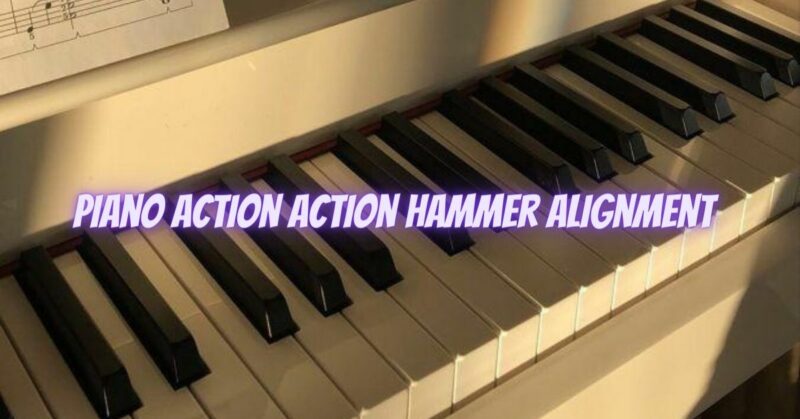The piano action hammer alignment is a crucial aspect of piano regulation that directly impacts the instrument’s playability and responsiveness. Proper hammer alignment ensures that each hammer strikes the strings accurately and consistently, resulting in an even and balanced tone across all the keys. Skilled technicians use various techniques and tools to align the hammers precisely, allowing the piano to achieve its full potential and deliver a satisfying playing experience for pianists of all levels.
The Importance of Hammer Alignment:
- Tonal Balance: Proper hammer alignment ensures that each hammer strikes the strings squarely, promoting a balanced and consistent tone throughout the piano’s range. This uniformity enhances the instrument’s overall sound quality.
- Responsive Touch: Accurate hammer alignment facilitates a more responsive touch, enabling pianists to execute delicate pianissimo passages and powerful fortissimo phrases with ease and control.
- Avoiding “Double Strikes”: Misaligned hammers can cause double strikes, where a hammer strikes the string more than once during a single keystroke, resulting in an undesirable sound. Correct alignment reduces the likelihood of this issue.
The Hammer Alignment Process:
- Visual Inspection: A technician begins by visually inspecting the hammer alignment. They observe how the hammers strike the strings, looking for any obvious misalignments or unevenness.
- Felt Punchings: The technician checks the felt punchings (small pieces of felt glued to the hammer shanks). If the punchings are worn or compressed unevenly, it can affect hammer alignment.
- Shank Alignment: The technician uses special tools to align the hammer shanks correctly, ensuring they are perpendicular to the strings.
- Rail Alignment: The technician checks the alignment of the hammer rail (the wooden rail that holds the hammer flanges). Proper rail alignment is essential for consistent hammer travel.
- Hammer Flanges: The technician checks the hammer flanges (the moving parts that connect the hammers to the action) for wear or looseness, which can affect alignment.
- Hammer Travel: The technician verifies that each hammer travels along its proper path, striking the strings accurately and without any obstructions.
Benefits of Proper Hammer Alignment:
- Enhanced Playability: Well-aligned hammers allow for smoother and more precise playing, enabling pianists to execute complex passages with greater control.
- Even Tone: Proper hammer alignment results in an even tonal response, eliminating inconsistencies in volume and timbre across the keyboard.
- Extended Instrument Life: Correctly aligned hammers experience less wear and tear, leading to a longer lifespan for both the hammers and the piano.
Regular Maintenance:
Piano action hammer alignment should be part of a comprehensive maintenance routine. As a piano is frequently played, its hammers may gradually shift and become misaligned. Regular servicing and adjustment ensure that the hammers remain in optimal alignment, allowing the instrument to perform at its best.
Conclusion:
Piano action hammer alignment is an integral part of piano regulation, contributing to the instrument’s overall sound quality, touch responsiveness, and playability. With the expertise of a skilled technician and attention to detail, hammer alignment ensures that each note on the piano responds precisely and consistently, creating a gratifying experience for pianists and producing a beautiful and well-balanced sound that resonates with audiences. Regular maintenance and adjustment of the hammers ensure that the piano continues to perform at its best for years to come.


